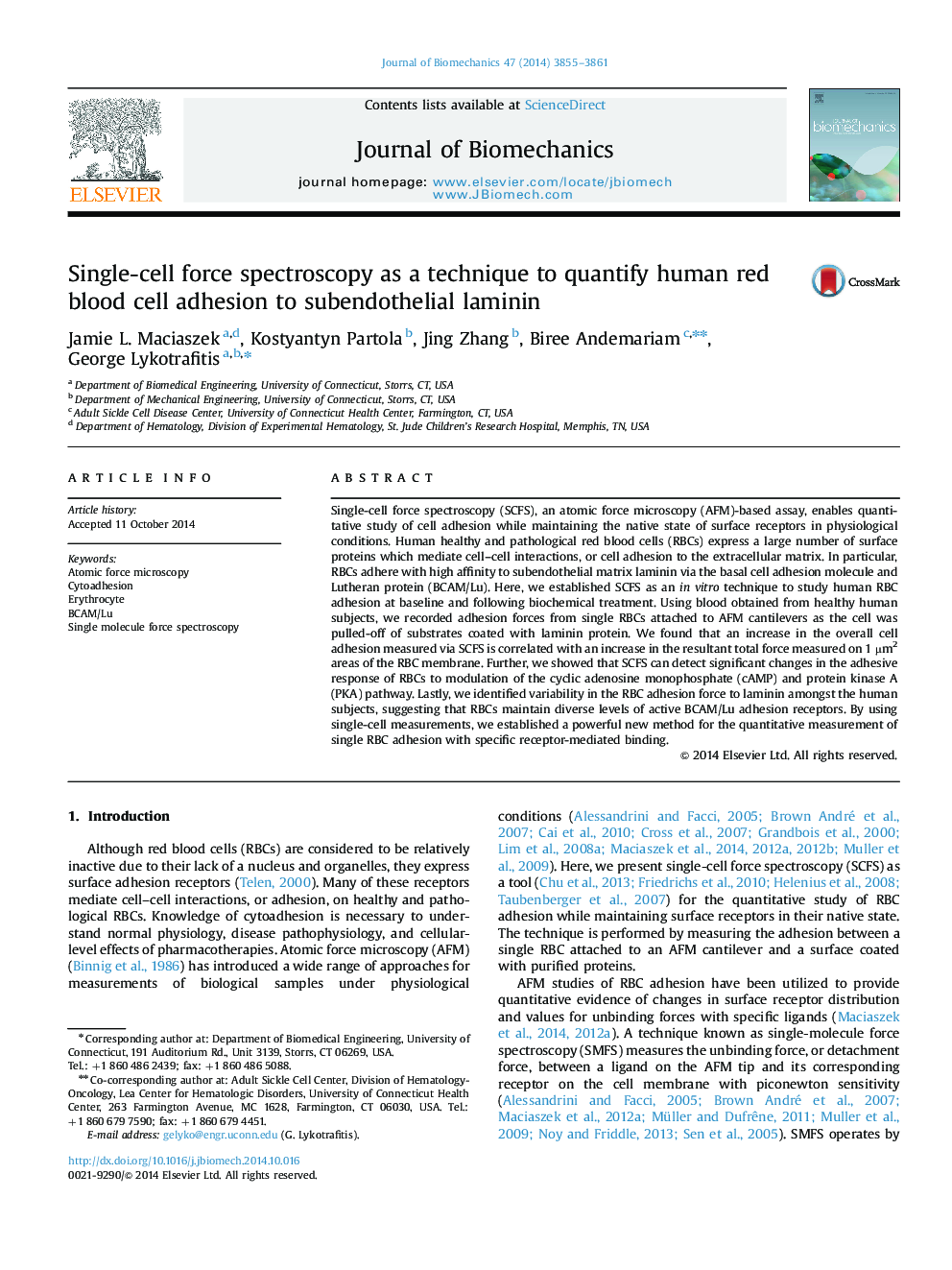| Article ID | Journal | Published Year | Pages | File Type |
|---|---|---|---|---|
| 871956 | Journal of Biomechanics | 2014 | 7 Pages |
Single-cell force spectroscopy (SCFS), an atomic force microscopy (AFM)-based assay, enables quantitative study of cell adhesion while maintaining the native state of surface receptors in physiological conditions. Human healthy and pathological red blood cells (RBCs) express a large number of surface proteins which mediate cell–cell interactions, or cell adhesion to the extracellular matrix. In particular, RBCs adhere with high affinity to subendothelial matrix laminin via the basal cell adhesion molecule and Lutheran protein (BCAM/Lu). Here, we established SCFS as an in vitro technique to study human RBC adhesion at baseline and following biochemical treatment. Using blood obtained from healthy human subjects, we recorded adhesion forces from single RBCs attached to AFM cantilevers as the cell was pulled-off of substrates coated with laminin protein. We found that an increase in the overall cell adhesion measured via SCFS is correlated with an increase in the resultant total force measured on 1 µm2 areas of the RBC membrane. Further, we showed that SCFS can detect significant changes in the adhesive response of RBCs to modulation of the cyclic adenosine monophosphate (cAMP) and protein kinase A (PKA) pathway. Lastly, we identified variability in the RBC adhesion force to laminin amongst the human subjects, suggesting that RBCs maintain diverse levels of active BCAM/Lu adhesion receptors. By using single-cell measurements, we established a powerful new method for the quantitative measurement of single RBC adhesion with specific receptor-mediated binding.
